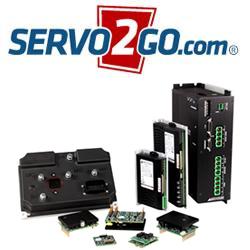How Simulation Can Secure Your Robotics Investment
Ways to Improve Your IMU Performance
Kibele-PIMS Shows How Imaging Ensures Food is Reliably Sorted and Packaged
For Next-generation Surgical Robots, Minimize the Axial Length of Your Robotic Joints
What is a Cobot? Bridging the Gap Between Robots and Humans
Update for the AI System IDS-NXT Cameras Can Now Also Detect Anomalies
Machine Shop Robots Get Real
Automated Support Removal & Finishing for Metal AM - Robots vs CNC
AI and the Chocolate Factory
Forklift Safety: AGVs to the Rescue
12 Ways Companies Are Automating Workflows With Mobile Robots
AMRs in Fleet Operation and Test Deployment
How Robotics Can Help Global Renewable Energy Goals & Create Jobs
The Innovation Behind the Orbital Flex™ Design Gear Solution
3D Time-of-Flight Camera Aids Robotic Palletizers
Records 316 to 330 of 2058
First | Previous | Next | Last
Featured Product

High Performance Servo Drives for localized and distributed control applications from Servo2Go.com
Robotics and Automation - Featured Company

